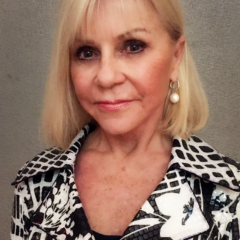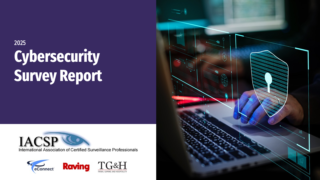
Millennials and the Future Face of our Customers
An important new national survey is revealing how Millennials think, feel and act. This type of information is important for casinos that are trying to figure out how to market – or even whether they should market – to a segment that is already larger than Baby Boomers. As data in this article shows, it’s probably going to be even more difficult than you think.
The GenForward Survey is the first of its kind – a nationally representative survey of almost 2,000 young adults ages 18-30 conducted monthly that pays special attention to how race and ethnicity shape how respondents experience and think about the world. GenForward is a survey of the Black Youth Project at the University of Chicago with the Associated Press – NORC Center for Public Affairs Research. The surveys explore the most critical political, social and economic issues impacting the United States. Highlights show how race and ethnicity help shape the opinions of the nation’s most diverse generation.
Two facts are critical in projecting how we will do business in the coming years:
1. Millennials are the most ethnically diverse segment in American history.
2. At our current U.S. population trajectory, Caucasians will be a minority within 30 years.
First, this article will review some of the key findings of the June and July 2016 GenForward surveys. Secondly, we’ll look at how population trends are redefining future consumers. Lastly, the impact and repercussions that these changes are already having on marketing will be illustrated with examples from national brands that are ahead of the curve on this trend. See what they’re doing and the fallout that it’s brought.
KEY FINDINGS FROM GENFORWARD SURVEYS
Survey topics change monthly and reflect current events, such as the presidential race, gun control, terrorist attacks, economic concerns, LGBT rights, job pay equality, and other key national topics. Differences of opinion by ethnicity on these topics may be indicative of overall differences as shaped by race, age and experiences.
Following are just a few topics covered in the GenForward surveys:
Who will Millennials vote for as President?
Political polarization is strongest among young minority voters. White voters are split politically due to their beliefs, while minorities split along racial lines.
How important are racial issues to Millennials?
African-Americans rank racism as their second-highest priority and police brutality as fifth.
Latinos rank immigration second and racism fifth.
Whites and Asian-Americans do not rank racism issues as important.
3 in 4 say wealth should be more evenly distributed:
Raise taxes on rich people.
Free college tuition.
Raise minimum wage.
Gun control vs. Gun ownership
Whites, Blacks and Hispanics are evenly split on this issue; 83% of Asians favor gun control.
A majority do not have a positive outlook on their personal finances.
40% say it’s good; 24% say it’s poor; and 36% say it’s between poor and good.
WHAT TO EXPECT IN POPULATION TRENDS
The generation of Millennials is more ethnically diverse than any other generation in U.S. history. As the GenForward surveys show, this generation also may hold the greatest divergence of opinions and preferences. This will make it more difficult to develop marketing messages and programs that have mass appeal.
The nation’s demographics are on a clear trajectory: White people are dying faster than they are being born, which means that they are on target to become a minority in the United States in 30 years.
Whites currently account for 62 percent of the population but 78 percent of deaths and their median age has hit an all-time high of 43, said William Frey, a demographer at the Brookings Institution. For the first time, Whites are in the minority among children under the age of 5.
As Millennials start families, who will be having the children? According to Pew Research, Hispanics are far more likely than others to have large families. Fully half of Hispanic mothers have three or more kids, compared with 40% of Blacks. About one-third (33%) of Whites have three or more kids, and just 27% of Asian moms do.
Minority population gains accounted for 95 percent of the U.S. population increase, largely due to Hispanic and Asian immigration, and more births.
One estimate shows that the Millennial generation, those people born from 1982 to about 2000, is the largest group in the U.S., totaling 83.1 million – one-quarter of the population. They outnumber the previously dominant Baby Boomer generation by almost 8 million.
Millennials are more diverse than any previous generation. More than 44 percent are part of a minority race or ethnicity.
WHAT THIS MEANS FOR CASINO MARKETERS
Racial messaging is rarely an easy conversation, yet it’s going to be a necessary one based on surveys, polls and census data. The American population is changing and marketing will have to adjust. Major brands that rely on Millennial business are in the forefront, but it’s not a comfortable place to be.
Here are some examples. In 2013, General Mills ran a Cheerios TV ad with a white mother, black father and mixed-race child. The negative response was so severe that the company had to disable the comment field from its YouTube videos. The company fought back a few months later with another TV commercial that aired during the 2014 Super Bowl and featured the same mixed family.
Old Navy is another major brand that relies on Millennial customers. Their first mixed-race family ad ran in April 2016 and created a firestorm of controversy. Some customers accused Old Navy of “white genocide” and threatened to boycott the store. It also resulted in waves of support, as dozens of mixed-race families posted their own
family photos with the hashtag #Lovewins.
Personally, I’ve lost count of the number of photo shoots I set up for the casino I was working for where we routinely set up “customers” at a blackjack table, restaurant or on the slot floor – several white people and a token black/Asian/Hispanic/Native American. That was the type of photo that was representative of our player base, and it pretty much still is today in many casino markets.
What we need to consider when we look at the marketing long view is that in the not too distant future we’ll be facing new challenges in a changing population. Being aware now that this change is coming is the first step in the journey.







